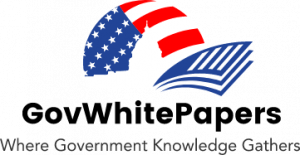This blog is the second of three articles about the value of understanding the latest trends in government technology. GovLoop partnered on this series with GovWhitePapers, a hub for educational content and thought leadership about the public sector. Working together, we aim to explain how ongoing awareness of technology trends can make agencies safer, strengthen their teams and help their employees use their tools more effectively. Click here for the rest of the series.
Governments need the best and brightest people to fulfill their missions, but their competition with the private sector for this talent has never been stiffer. How can agencies win a contest that often seems stacked against them?
The answer is enabling a modern workforce. Modern workforces give their employees and managers the best possible workflows, user experiences and digital access to data in real time. Without workforces like these, agencies cannot keep up with the private sector on critical topics such as cybersecurity. Most agencies have budget, regulatory and security constraints that private-sector businesses do not.
Creating resources for agencies to navigate these types of hurdles is the driving force behind GovWhitePapers. GovWhitePapers is a central hub for content and research aimed at benefiting the public sector nationwide. Leveraging this information, employees can craft strategies for hiring, recruiting and developing the top talent they need.
Take cybersecurity, which may require IT, software and other skills. Using GovWhitePapers’ information, agencies can ensure that they are capable of nurturing cybersecurity talent.
“Improving cybersecurity is not just a technology issue, it’s a culture issue that needs strong change management practices,” said Kerry Rea, GovWhitePapers’ President, on why modernizing workforces matters for subjects like cybersecurity.
Missions are one area where agencies have an edge over other organizations when attracting talent. Few institutions can offer the opportunity to impact peoples’ lives like agencies can.
“The scope and impact of government work can be appealing, especially to younger workers who want their work to make a difference in the world,” Rea said. “The hope is that after that work is done, they’ll want to stay in government to continue making a difference.”
Take fellowships like the U.S. Digital Corps program. Launched in August 2021, the initiative is seeking 30 fellows across critical technology fields, including cybersecurity.
How is President Joe Biden’s administration courting skilled early-career technologists for this two-year commitment? The secret is high-impact projects such as streamlining federal government services. Once chosen, the fellows are expected to start working at more than five federal agencies in fiscal year 2022.
Technology modernization is another way that agencies can distinguish their workplaces from the private sector’s. When it comes to work, today’s average employee expects easy-to-use digital tools. The COVID-19 pandemic, meanwhile, has made hybrid work mixing on-site and remote talent more important than ever. Too often, agencies cannot meet needs like these using outdated tools.
“People of all generations are using consumer tech and expect their workplace tech to be up to the same standards,” Rea said. “Modernizing systems not only has a huge impact on the efficiency and effectiveness of the workforce, but it helps with recruitment and retention.”
Diversity is the third quality that can tip the talent scales in the public sector’s favor. As agencies add more backgrounds and experiences to their workforces, the number of opportunities to draw people with similar histories grows. Gradually, this variety can even make agencies’ employees feel more included and valued.
Yet diversity should matter more to agencies than for simply developing talent. Diversity can also prevent traits like bias from impeding agencies’ missions.
“Diversity is especially important as the use of artificial intelligence (AI) increases to combat unconscious bias being programmed into the AI algorithms,” Rea said as an example of how diversity can improve agencies’ workforces. AI involves machines imitating human intelligence, so attributes like bias could make it detrimental to agencies.
Processes and technology matter, but people are the real force behind the public sector. GovWhitePapers can point agencies toward insights that help handle this crucial component of their missions.
“With GovWhitePapers, we’ve tried to simplify the process of finding helpful and applicable content for the government community with a one-stop search for thoughtful content on timely issues,” Rea said.
To learn more about closing the public sector’s knowledge gaps with continuous learning, click here for GovWhitePapers’ content.
And for more information about public-sector people, processes and tools, click here to read the rest of GovLoop’s series about technology trends.






Leave a Reply
You must be logged in to post a comment.